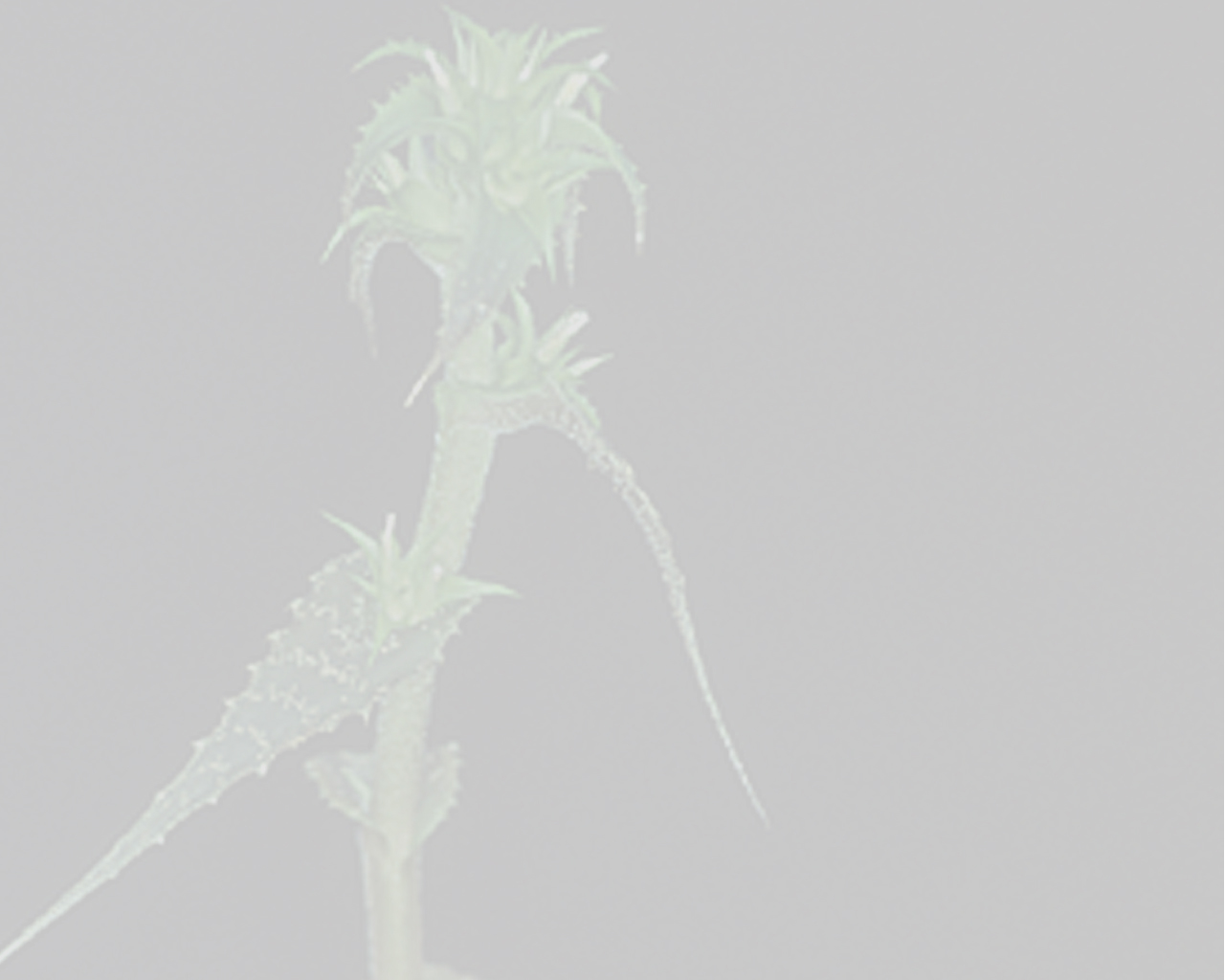

 Orthophytum rafaelii Leme[as Orthophytum rafaelii Leme]
Orthophytum rafaelii Leme[as Orthophytum rafaelii Leme]Diagnose: —Ab Orthophyto hatschbachii, cui verosimiliter affinis, laminis foliorum angustioribus, supra basin versus dense lepidotis, marginibus spinis brevioribus, inflorescentia composita, bracteis floriferis internis apicem versus dense vel subdense albo lepidotis, sepalis longioribus et petalis longioribus differt; a O. heleniceae, affinis, laminis foliorum angustioribus, supra basin versus dense lepidotis, marginibus spinis longioribus inter sese 28 mm distantibus, bracteis floriferis internis apicem versus dense vel subdense albo lepidotis, lepidibus haud capitatis, sepalis glabris et petalis longioribus differt; a O. ophiuroides cui similis, laminis prope basin utrimque dense albo-lepidotis, viridulis, marginibus spinis longioribus basalibus interdum retrorse-curvatis, bracteis floriferis sepalisque viridibus et petalis longioribus recedit. Observations: —Observations: According to the identification key provided by Louzada (2008), O. rafaelii is morphologically similar to O. hatschbachii Leme (1995a:120), if one ignores its compound inflorescence (used as a distinguishing character in the key). However, O. rafaelii differs from O. hatschbachii by its narrower leaf blades (0.40.7 cm vs. 0.71.8 cm wide), which are densely white lepidote toward the base adaxially (vs. glabrescent to glabrous), margins with shorter spines [0.51.7 mm vs. (1.7)2.03.5 mm], by the compound inflorescence (vs. simple or subsimple), the inner floral bracts densely to subdensely white lepidote toward the apex (vs. glabrous), the longer sepals (ca. 14 mm vs. 0.812.0 mm long) and by the longer petals (2021 mm vs. 1617 mm long). When the compound inflorescence is considered O. rafaelii is also morphologically similar to O. heleniceae Leme (2004:67), especially in its compound inflorescence, but it is vegetatively distinct (Leme 2004). It can be distinguished by the narrower leaf blades (0.40.7 cm vs. 1.31.5 cm wide) which are densely white lepidote toward the base adaxially (vs. glabrescent), margins with longer spines (0.51.7 mm vs. ca. 0.5 mm) which are 28 mm apart (vs. 1.01.5 mm apart), by the inner floral bracts densely to subdensely white-lepidote toward the apex (vs. glabrous) with squamiform trichomes (vs. with glandular-capitate trichomes), the glabrous sepals (vs. with glandular-capitate trichomes) and by the longer petals (2021 mm vs. 1718 mm long).
Because of the comparatively narrow leaf blades, which provides a delicate general appearance, O. rafaelii can also be confused with O. ophiuroides Louzada & Wanderley (2008:406), a narrow-leaved species from Len็๓is. However, this new species differs by its densely white-lepidote leaf blades toward the base on both sides (vs. sparsely white-lepidote to glabrescent on both sides), forming an outer orange-red ring in contrast with the inner yellowish-green ring around the inflorescence (vs. forming a single red ring around the inflorescence), and having margins with longer spines (0.51.7 mm vs. 0.30.4 mm long), the green floral bracts and sepals (vs. red), and by the longer petals (2021 mm vs. 1517 mm long).
This new species occurs near the region of Morro do Pai Inแcio, Palmeiras, Bahia, where two Orthophytum species of the sessile inflorescence complex can also be found: O. amoenum (Ule) L.B.Sm. and O. burle-marxii L.B.Sm. & Read (Concei็ใo et al. 2007). However, both of these taxa are different from O. rafaelii, based on the morphological deliminations presented for O. burle-marxii by Louzada (2008) and Louzada & Wanderley (2010), and for O. amoenum by Wanderley & Louzada (2009).Edited from (28-12-2014): Leme & Kollmann 2011. (protologue) New species and a new combination of Brazilian Bromeliaceae. .